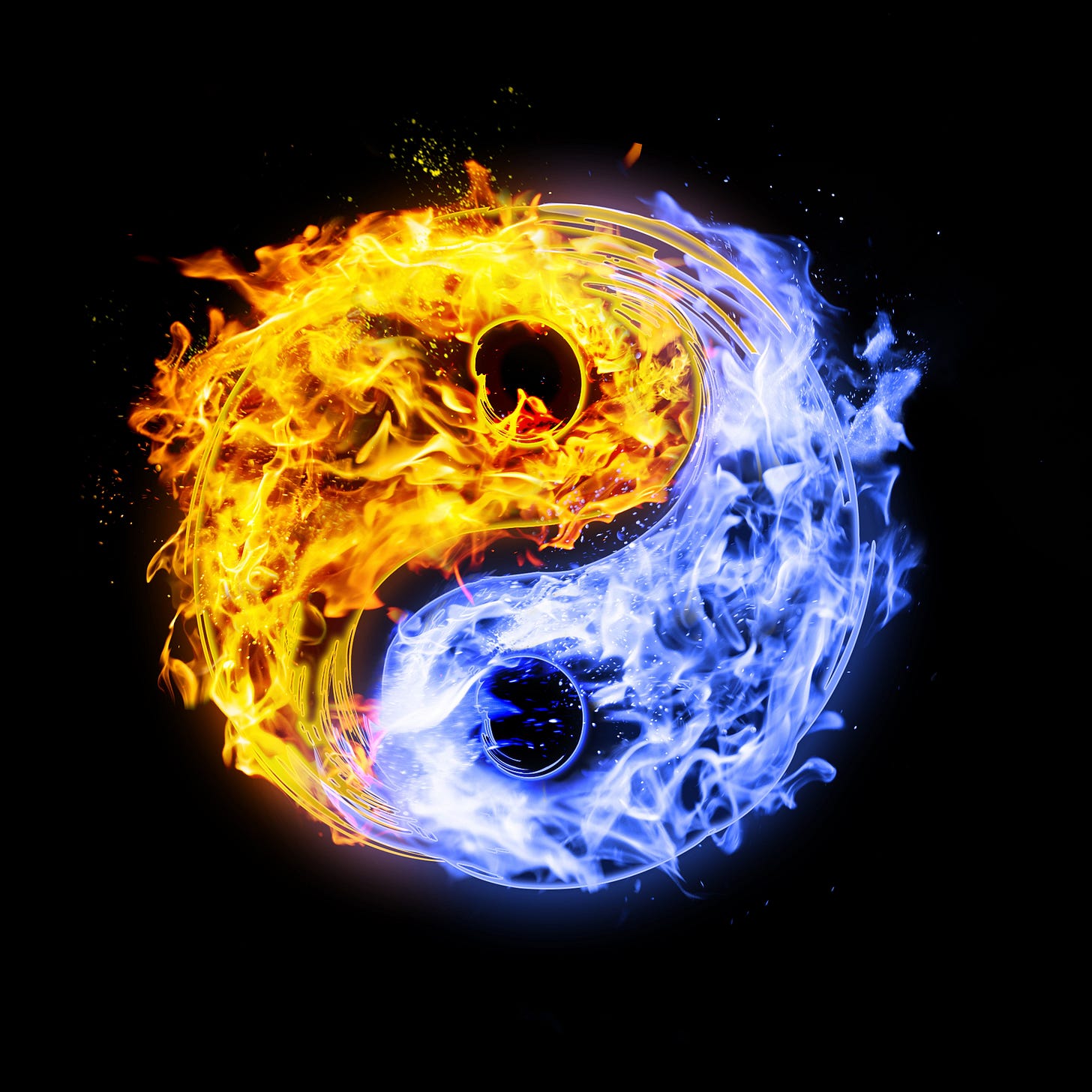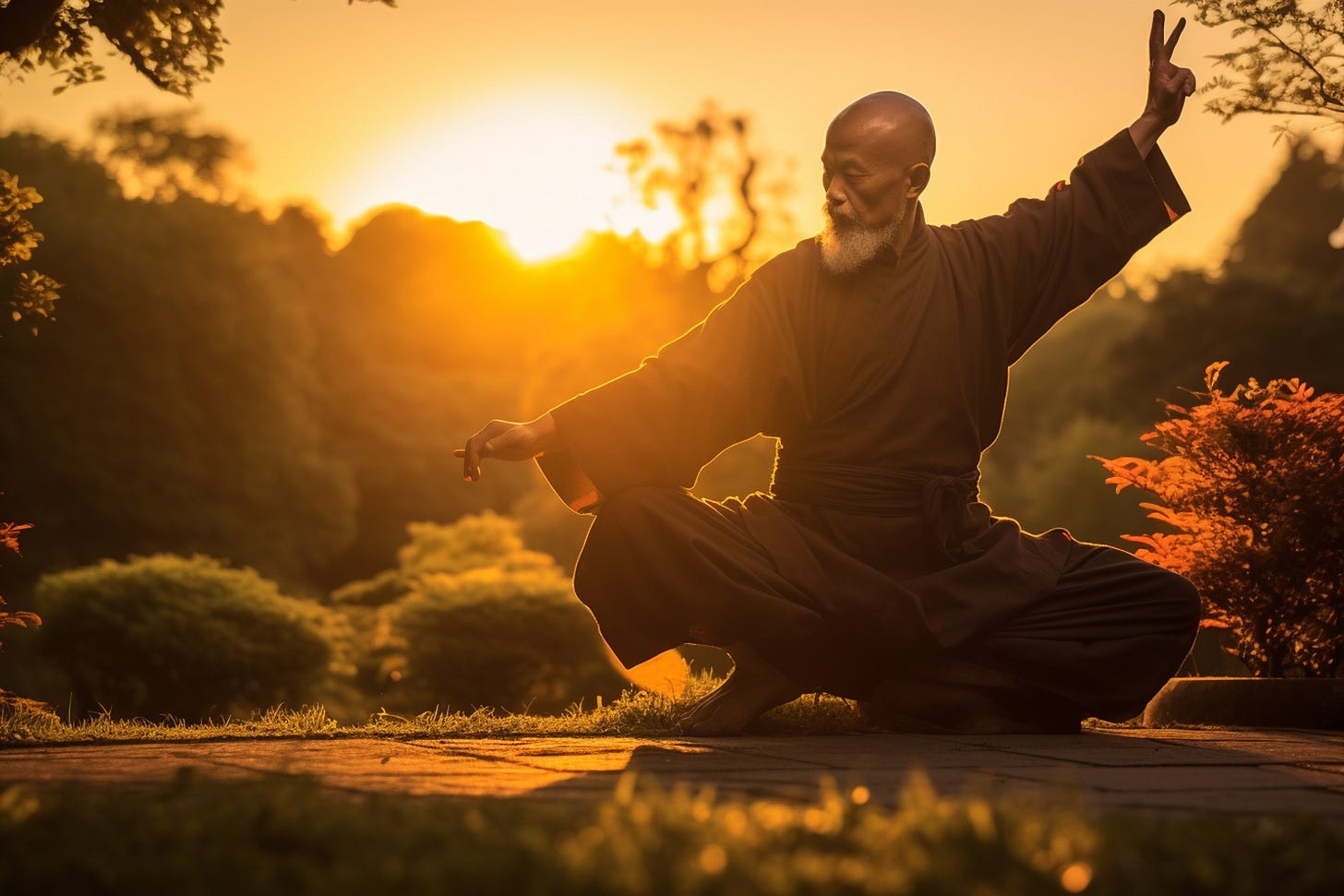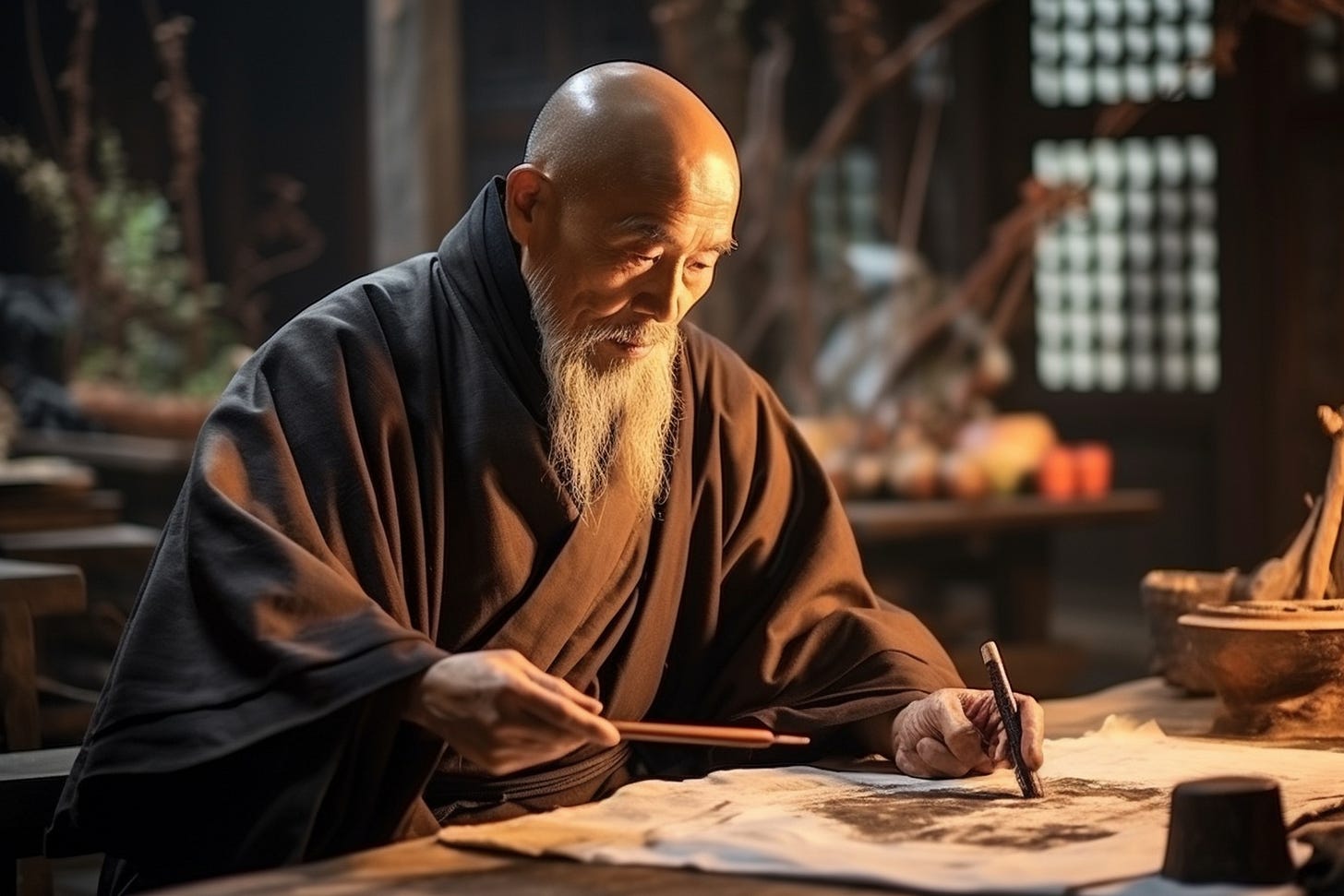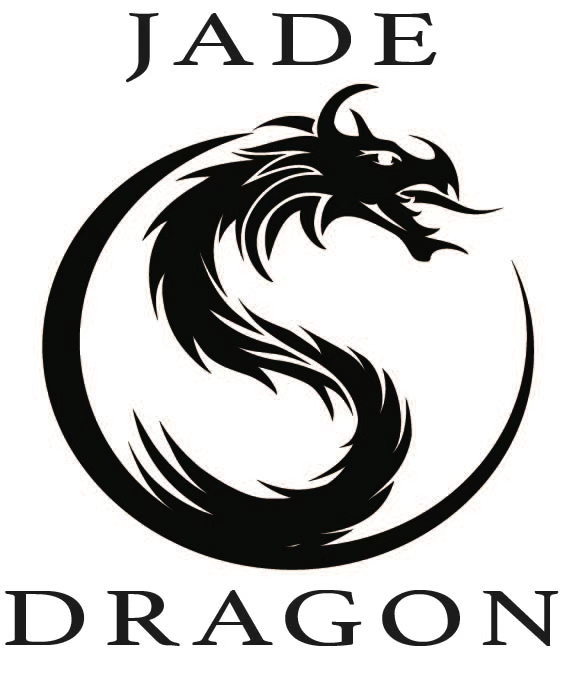Chapter 2 of the Dao De Jing: The Interplay of Opposites and the Path of the Sage
One of the most profound chapters in the Dao De Jing is also one of the earliest. Chapter 2 opens the door to understanding the relational nature of reality and reveals the essence of Daoist wisdom: that opposites arise together, that harmony is found in contrast, and that the sage teaches not by force, but by presence.
Let’s take a closer look at the insights hidden in this ancient verse — and why they still matter in our modern world.
Beauty and Ugliness, Good and Evil: The Mutual Arising of Opposites
“In this world, beauty is called beauty because there is ugliness.
Good is called good because there is evil.”
At first glance, this statement might sound strange. But look a little deeper and you’ll see the wisdom of relativity — not in the Einsteinian sense, but in the sense that all things in life are known through their opposites. Beauty is only recognized as beauty because we know what ugliness is. Without the shadow, light is undefined.
This is a core tenet of Daoist thought: nothing exists independently or in isolation. All phenomena arise in relationship. Day follows night. Birth implies death. Strength implies weakness. Each quality calls its opposite into being.
This is echoed in the foundational concept of 陰陽 (yīn yáng), where dualities are not at war with each other, but constantly transforming into one another — always dynamic, always in flux.
Existence and Emptiness: Two Sides of the Same Coin
“Thus, emptiness and existence transform into each other,
Difficult and easy come from each other,
Long and short compare to each other…”
Here, the text turns toward transformation. Emptiness (無 wú) and existence (有 yǒu) aren’t separate realities — they are interdependent. Just as a cup is useful because of its empty space, form arises from formlessness.
This paradox is one of the beautiful puzzles of Daoism. What is empty is what makes something useful. The space in a room makes it livable. The pause in music makes it expressive. Even hardship can give meaning to ease.
And so, we’re reminded: don’t cling to what is, and don’t fear what is not. They belong to each other.
Harmony Through Contrast
“Sounds and voices blend together in harmony,
Before and after follow each other.”
In Daoist thought, harmony is not sameness — it is the dance between different tones, movements, and rhythms. Sound and silence, high and low, quick and slow — these are not enemies. They are partners in the song of life.
Even time follows this principle. The future becomes the past, just as today will soon be yesterday. The Dao flows through all things, not in a straight line, but in cycles and transformations.
The Sage understands this, and does not fight the turning wheel. Instead, he moves with it.
The Sage and Wu Wei: Doing Without Forcing
“Knowing this, the sage acts by doing nothing,
And teaches without saying a word.”
This is the first appearance of a crucial Daoist concept: 無為 (wúwéi) — often translated as “non-action,” but that doesn’t quite capture its meaning. A better translation might be “effortless action” or “action without force.”
The sage doesn’t force things into place. He doesn’t manipulate outcomes. He leads by example, not by control. He teaches through his way of being — not through speeches, demands, or doctrines.
This is radically different from how leadership is often imagined today. But perhaps that’s why it’s so compelling.
In a world full of noise and striving, the Daoist sage reminds us that presence is more powerful than pressure.
Creation Without Possession
“The ten thousand things arise but he is silent.
Things grow but he takes nothing for himself.
He acts but doesn’t compel.
He creates but seeks no recognition.”
The phrase “ten thousand things” (萬物 wànwù) refers to all phenomena, all forms of life. The sage doesn’t try to control them. He doesn’t cling to outcomes or demand credit.
He does the work — and lets go.
This is not apathy. It’s not laziness. It’s a deep, intuitive trust in the process of life. The sage knows that growth happens naturally. His role is to nurture, not dominate. He acts with integrity, not ambition.
This principle can apply to parenting, leadership, creativity, and even healing. When we stop trying to control every outcome, we allow the Dao to do its work.
The Power of Letting Go
“By not seeking recognition, he has nothing to lose.”
This is one of the most powerful lines in the chapter. In Daoism, freedom comes from non-attachment. If you don’t need praise, you can’t be hurt by criticism. If you don’t cling to status, you won’t fear losing it.
The sage doesn’t act to gain admiration. He acts because it is right to act. And in that space, there is peace.
This is not about becoming invisible or passive. It’s about becoming untouchable by ego, untethered from fear. The person who doesn’t seek recognition is free to serve, and free to rest.
Living Chapter 2: A Modern Reflection
So how do we live these teachings today?
We can remember that our judgments are often based on contrast, and so soften our grip on what we think is “right” or “wrong.”
We can practice non-striving in areas of our life where control has become exhausting.
We can choose to create and contribute without attachment to recognition, knowing the value of what we offer is not determined by applause.
And we can learn to trust the flow of our lives — knowing that what is empty will one day be full, and what is difficult will turn to ease.
Daoism doesn’t demand perfection. It simply asks that we align with the natural rhythm of things, and find the stillness in their movement.
Conclusion
Chapter 2 of the Dao De Jing invites us to view the world not in terms of fixed truths, but as a continuous interplay of opposites. It reminds us that there is no beauty without ugliness, no ease without hardship, and no creation without emptiness.
More than a philosophical idea, this chapter is a blueprint for wise living. It teaches us that the most powerful way to lead, create, and act — is to do so without ego, without force, and without grasping.
In a world that constantly urges us to strive, Chapter 2 offers an antidote: quiet strength, gentle leadership, and the profound courage to let go.
Discover your inner vitality with Red Dragon Qigong, a transformative course designed to harmonize body, vital energy, and mind. Rooted in the ancient wisdom of Traditional Chinese Medicine and Daoist philosophy, and enhanced with modern scientific insights, this course guides you through powerful Qigong practices that boost energy, reduce stress, and improve overall health. Whether you're a beginner or experienced practitioner, you'll learn techniques that cultivate balance and resilience, empowering you to thrive in daily life.
Join thousands of students on this journey of self-discovery and transformation. Enroll now and experience the power of Red Dragon Qigong!
👉 Visit CLICK HERE to get 50% off and start your practice today!






